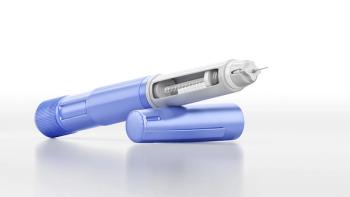
Formulation Strategies, Tech Advances, Challenges, and Considerations in Novel Drug Delivery
Key Takeaways
- Biopharmaceuticals offer unprecedented specificity and efficacy but face challenges in formulation, delivery, and commercialization due to their complexity.
- Nanocarriers, molecular modifications, and sustained-release platforms are essential for optimizing biopharmaceutical delivery and enhancing therapeutic outcomes.
The transformative impact of complex biopharmaceuticals hinges on integrating advanced delivery systems, often accelerated by AI modeling, with robust manufacturing practices and regulatory alignment to ensure stability, safety, and effective patient access.
When examining current product development trends happening in the pharmaceutical industry, biopharmaceuticals—including monoclonal antibodies, recombinant proteins, peptides, RNA-based therapeutics, and increasingly, cell and gene therapies—may represent the industry’s fastest-growing product segment. These advanced therapies offer unprecedented specificity and efficacy, targeting diseases previously considered untreatable (1). However, their size, structural complexity, and sensitivity create challenges the industry is having to deal with, in terms of formulation, delivery, and commercialization, to manufacture and deliver these complex therapies.
Unlike small molecules, biopharmaceuticals cannot rely on conventional oral delivery due to certain physiological responses in the body, the effects of which can include enzymatic degradation, poor membrane permeability, and rapid clearance. Many require parenteral or localized delivery, and cell or gene therapies often need ex-vivo manipulation or viral/non-viral vectors. Optimizing formulation and delivery strategies is, therefore, essential for both clinical efficacy and commercial success.
Which formulation strategies have high potential to be effective?
Nanocarrier systems. Nanocarriers, including lipid nanoparticles (LNPs), polymeric micelles, and liposomes, protect fragile molecules, enhance circulation half-life, and enable targeted tissue delivery (2). LNPs are central to RNA therapeutics, such as messenger RNA vaccines or small interfering RNA therapies, ensuring molecular stability and facilitating cellular uptake (3). Similar strategies are being adapted for non-viral gene delivery (3).
Molecular modifications. PEGylation, Fc-fusion, and lipidation extend protein half-life, reduce immunogenicity, and improve pharmacokinetics (4,5). For gene therapies, vector design, promoter selection, and capsid engineering similarly optimize expression, stability and tissue targeting (4).
Sustained-release platforms. Biodegradable microspheres, hydrogels, and depot systems allow controlled release of proteins, peptides, or viral vectors, reducing dosing frequency and improving therapeutic consistency compared with the performance of small molecules. For ex-vivo gene-modified cells, encapsulation strategies can enhance cell viability during transport and delivery.
Minimally invasive and targeted delivery. Microneedle arrays, transdermal patches, and targeted infusion systems can improve patient comfort and adherence. Targeted delivery—through ligand-conjugated nanoparticles, viral vectors, or tissue-homing cells—serves to enhance efficacy while minimizing off-target effects.
Non-invasive delivery. Oral, nasal, and pulmonary approaches for biologics leverage permeation enhancers, mucoadhesive polymers, and enteric coatings (6). Although cell therapies are less amenable to non-invasive delivery than conventional deliveries already on the market, advances in microfluidics and encapsulation are expanding localized administration options (7).
What technological advancements are driving drug delivery?
The last decade has seen breakthroughs that are reshaping biopharmaceutical delivery (8).
RNA therapeutics and LNPs. RNA molecules are intrinsically unstable and require protective carriers (9). LNPs encapsulate RNA, protect it from nucleases, and enhance cellular uptake, setting a new benchmark for delivery systems (9).
Cell and gene therapy vectors. Non-viral vectors (lipid, polymer, or hybrid nanoparticles) and viral vectors (adeno-associated virus, lentivirus) enable efficient delivery of genetic payloads (10). Advanced capsid engineering and promoter selection improve targeting, expression, and safety (11).
Stimuli-responsive biomaterials. Hydrogels, liposomes, and nanoparticles can release drugs in response to pH, temperature, or enzymatic activity, improving precision and reducing systemic exposure (12).
Artificial intelligence (AI) and computational modeling. Machine learning algorithms predict stability, solubility, permeability, and pharmacokinetics, enabling rational design of complex formulations and optimizing delivery strategies (8).
Combination products. Integration of drug formulations with devices, such as prefilled syringes, auto-injectors, or microneedle patches, enhances usability, dosing accuracy, and patient compliance (13).
What are the biggest manufacturing challenges?
Scaling novel delivery systems for biopharmaceuticals presents several hurdles.
Process control. Biologics are sensitive to shear, temperature, and pH fluctuations (14). Therefore, maintaining structural integrity and bioactivity during large-scale production is essential.
Sterility and contamination. Parenteral products demand strict aseptic conditions to prevent microbial contamination (15).
Cold-chain requirements. Many biologics, especially RNA formulations, require stringent temperature control to preserve stability (14).
Device and vector integration. Combining biologics with delivery devices or gene/cell therapy vectors adds complexity to manufacturing workflows.
Analytical challenges. Nanocarriers and modified proteins necessitate robust characterization methods, including particle sizing, encapsulation efficiency, and release kinetics (16).
Are there any particularly relevant regulatory considerations?
Regulatory oversight is adapting to accommodate complex biologics, RNA therapeutics, and cell and gene therapies.
Combination products: Agencies evaluate both the drug/cell product and delivery device, including performance, stability, and user safety (17).
Platform technologies. LNPs and viral vectors may benefit from platform-based regulatory approaches, streamlining approvals for multiple candidates.
Immunogenicity and safety. Modified proteins, RNA carriers, viral vectors, and transplanted cells require thorough evaluation of immune responses and off-target effects (18).
Quality-by-design (QbD). Regulators encourage QbD principles to ensure reproducible manufacturing and consistent quality (19).
Global harmonization. FDA, the European Medicines Agency, and the International Council for Harmonisation provide guidance for emerging delivery systems, supporting international compliance.
Any final takeaways?
Biopharmaceuticals, including RNA, protein, cell, and gene therapies, represent a transformative shift in medicine. However, their therapeutic impact hinges on formulation, delivery, manufacturing, and regulatory alignment.
Nanocarriers, sustained-release platforms, microneedles, and gene/cell delivery systems are redefining how complex molecules and cells reach their targets (20). AI-guided formulation accelerates development compared with conventional delivery mechanisms, while advanced manufacturing and regulatory strategies ensure scalability, safety, and compliance.
By integrating molecular design, advanced delivery technologies, and robust manufacturing practices, pharmaceutical companies can translate cutting-edge biopharmaceuticals into safe, effective therapies that reach patients efficiently and reliably.
References
1. Walters, A.J.; Yang, X.; Olson, S.D.; and Bashor, C.J. Enhancing the Safety and Efficacy of Cell Therapy with Programmed Sense-and-Respond Function. Clin. Transl. Med. 2025, 15 (5) e70328. DOI:
2. Swetha, K.; Kotla, N.G.; Tunki, L.; et al. Recent Advances in the Lipid Nanoparticle-Mediated Delivery of mRNA Vaccines. Vaccines 2023 11 (3) 658. DOI:
3. Jiang, Y.; Fan, M.; Yang, Z.; et al. Recent Advances in Nanotechnology Approaches for Non-Viral Gene Therapy. Biomater. Sci. 2022, 10 (24) 6862–6892. DOI:
4. Ginn, C.; Khalili, H.; Lever, R.; and Brocchini, S. PEGylation and Its Impact on the Design of New Protein-Based Medicines. Future Med. Chem. 2014, 6 (16) 1829–1846. DOI:
5. Strohl, W.R. Fusion Proteins for Half-Life Extension of Biologics as a Strategy to Make Biobetters. BioDrugs 2015, 29, 215–239. DOI:
6. Mirasol, F.
7. Lopez-Vidal, L.; Juskaite, K.; Ramöller, I.K.; et al. Advanced Drug Delivery Systems for the Management of Local Conditions. Ther. Delivery 2025, 16 (3) 285–303. DOI:
8. Kaur, T.; Dushyant; Sharma, T.; and Dhingra, A.K. Technological Advancements in Drug Formulation and Delivery: Revolutionizing Therapeutic Outcomes. Curr. Pharm. Des. 2025 online. DOI:
9. Wei, P.-S.; Thota, N.; John, G.; et al. Enhancing RNA-Lipid Nanoparticle Delivery: Organ- and Cell-Specificity and Barcoding Strategies. J. Controlled Release 2024, 375, 366–388. DOI:
10. Cavazza, A.; Molina-Estévez, F.J.; Plaza Reyes, A.; et al. Advanced Delivery Systems for Gene Editing: A Comprehensive Review from the GenE-HumDi COST Action Working Group. Mol. Ther.—Nucleic Acids 2025, 36 (1) 102457. DOI:
11. Büning, H. and Srivastava, A. Capsid Modifications for Targeting and Improving the Efficacy of AAV Vectors. Mol. Ther.—Methods Clin. Dev. 2019, 12, 248–265. DOI:
12. Fagehi, T.H.M.; Alanazi, H.S.; Alshehri, A.A.M.; et al. Innovative Drug Delivery Systems: Nanotechnology, Liposomes, or Hydrogels for Targeted Drug Delivery. J. Int. Crisis Risk Commun. Res. 2024, 7 (S11) 368–379.
13. Kwok, K.
14. Sarvepalli, S.; Pasika, S.R.; Verma, V.; et al. A Review on the Stability Challenges of Advanced Biologic Therapeutics. Pharmaceutics 2025, 17 (5) 550. DOI:
15. Curry, W.; Conway, S.; Goodfield, C.; et al. Reducing the Risk of Contamination of Sterile Parenteral Products via Ready-to-Use Closure Components. AAPS PharmSciTech 2010, 11, 1572–1579. DOI:
16. Alshawwa, S.Z.; Kassem, A.A.; Farid, R.M.; et al. Nanocarrier Drug Delivery Systems: Characterization, Limitations, Future Perspectives and Implementation of Artificial Intelligence. Pharmaceutics 2022, 14 (4) 883. DOI:
17. Gupta, D.K.; Tiwari, A.; Yadav, Y.; et al. Ensuring Safety and Efficacy in Combination Products: Regulatory Challenges and Best Practices. Front. Med. Technol. 2024, 6, 1377443. DOI:
18. Lopes, R. and Prasad, M.K. Beyond the Promise: Evaluating and Mitigating Off-Target Effects in CRISPR Gene Editing for Safer Therapeutics. Front. Bioeng. Biotechnol. 2024, 11, 1339189. DOI:
19. Yu, L.X.; Amidon, G.; Khan, M.A.; et al. Understanding Pharmaceutical Quality by Design. AAPS J. 2014, 16, 771–783. DOI:
20. Guo, R.; Zhang, Z.; Zhang, S.; et al. Innovative Nanocarriers: Synthetic and Biomimetic Strategies for Enhanced Drug Delivery. Mater. Today Bio 2025, 34, 102180. DOI:
Newsletter
Stay at the forefront of biopharmaceutical innovation—subscribe to BioPharm International for expert insights on drug development, manufacturing, compliance, and more.





